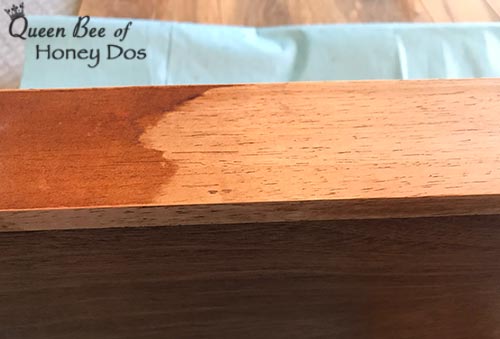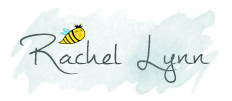Refinishing a piece of furniture can be an extremely messy and unpleasant process. Sometimes, you just know that there is beauty waiting below the surface of that old flea market find, but the hassle of uncovering that beauty can seem daunting. But, it need not be. If you know which solvent to use for testing and stripping wood, then you can significantly reduce your labor time and effort. So, today I wanted to go over how to figure out which type of finish you have, and what process works the quickest at removing it.
Which Solvent to Use for Testing and Stripping Wood…

About methylene chloride :
Before we get started, I did want to take a moment to go over a very important chemical: methylene chloride. If you are unfamiliar with stripping chemicals, then you should know that methylene chloride used to be the standard chemical for all stripping. However, it was discovered that this chemical causes a host of health issues, including cancer. As a result, it was banned in many countries and warnings were issued in others.
Here in the US, methylene chloride is still found in many strippers. Which is why I believe that it is so important to not use a strong chemical stripper as a catchall. In many cases, we can find a less dangerous method to get the job don’t just as quickly. The first step is to do a simple test to determine what type of finish we have.
Which Solvent to Use for Testing and Stripping Wood…
Order of testing a finish :
When I am presented with a piece that needs stripping or a touch up, the first thing I do is to conduct this test: (FYI – You must do these tests in this order).
- Wax – If I think there is a possibility that wax has been applied as a finish, I check for that first. To check for a wax finish, place a drop of mineral spirits in an inconspicuous place. Allow it to set for a minute. Then, test the spot. If it is tacky or if it lifted the finish, then you have wax. Note – Make sure that you start with a clean piece of furniture before performing this test, as mineral spirits will lift grease and grime as well. And, you don’t want to be confused about which is being removed.
- Shellac – If it is not wax, I move on to test for a shellac finish. Shellac is dissolved with denatured alcohol. So, apply a small drop to an inconspicuous area. Wait about about 10 seconds and wipe. If it has a shellac finish, it will have dissolved the finish. If the spot is just tacky, you probably have a shellac mix.
- Lacquer – If you are refinishing a piece from a furniture chain or from one of the big box stores, you most likely have a lacquer or a lacquer mix finish. Because lacquer is (IMHO) one of the best finishes to use on furniture, it is still quite common. To test for a lacquer finish, apply a small drop of lacquer thinner or acetone to an inconspicuous spot. If it is lacquer, the finish will dissolve almost immediately. Wait about 10 seconds and wipe away. If you have a clean spot, it is lacquer. If it doesn’t remove the finish but leaves a soft spot, move on. Note – these chemicals will also remove shellac. So, make sure to do this test after the shellac test to get accurate results.
- Water v/s oil – Once I have knocked out the three above possibilities with no results, I know that I have some form of varnish or poly. So, the next step is to determine if it is water based or oil based. Keep in mind that a water base should have softened under the previous test for lacquer. But to know for sure, apply a small amount of xylene. Wait a few seconds and check. If it is water based, the xylene will have dissolved it. If you get no response, then you have an oil based poly or paint.
Which Solvent to Use for Testing and Stripping Wood…
Chemicals to use for stripping and thinning:
Once you know what type of finish you are dealing with you can then move onto removing it. In many cases you will use the same chemical to remove the finish as you did to test the finish, but there are a few exceptions.

Wax – This is one of the hardest finishes to redo. Because wax is penetrating, removing all of it is almost impossible. You should never attempt to sand away a wax finish, because the friction will heat the wax and push it deeper into the grain. The best way to get rid of a wax finish is to start by cleaning as much as possible with the mineral spirits.
Once that is done, begin to wipe the piece down with acetone. You will need lots of clean rags to wipe away the wax. Never go over the piece with a previously used cloth as it will only redeposit the wax. Just continue the process: apply acetone, wipe, switch cloths, repeat. It may take many rounds to get all of the wax. Once you think that you have gotten rid of all the wax, do it again just to be sure.
Shellac – Just as in testing for shellac, the best way to remove it is with denatured alcohol. The process is quite easy for this finish, you should be able to wash away the fish with the alcohol, a cloth, and a 3M scotch pad for the difficult areas.

Lacquer – Acetone or Lacquer Thinner is the go to products for lacquer. Not only will these products thin lacquer but they also remove it very quickly. I use the washing method as described for removing shellac to remove lacquer. In comparison to using a stronger chemical that requires scrapping, the acetone washing method is a snap. You can see my process in my post on my ladder shelf makeover.
Water Based Varnish, Polyurethane, Urethane – When you are applying a water based product, obviously you can thin it with water if needed. For oil based polys, use mineral spirits or paint thinner for thinning. But to remove a poly once it has dried, you will need something much stronger. While poly finishes are certainly more durable than any of the above finishes, they are also much more labor intensive to remove.
To remove Paints and Polys, you will need to either do some serious labor and/or pull out the strong chemical strippers. Luckily, we now have access to a few stripping products that are supposed to be less harmful. However, any stripper that can remove a poly finish is going to be serious business. You can see the steps that I outlined for using Jasco to remove a finish, here. (FYI – I, myself, use strong chemicals when the situation warrants it. But, I am always careful to practice safety protocols.)

You can also use a sander to remove the finish if the piece is mostly flat. Keep in mind, though, that pieces built prior to 1978 should be tested for lead, before you start sanding. If you discover lead or you are unsure, it is best to avoid sanding the finish. In which case, you will be reduced to chemicals.
Another method is to use a heat gun to lift and scrap away a finish. However, this method is probably the most time consuming. You could also damage the wood if you are not careful. I prefer to use a heat gun only for intricate or difficult areas.
Final Comments:
Regardless of the chemical that is required to strip a piece, you should always wear a face mask and follow all safety procedures. Only work with chemicals in a well ventilated area and avoid breathing the vapors as much as possible. Stripping furniture is a nasty and potentially dangerous business, but it can be done well, quickly, and safely if the proper steps are taken.

– PIN IT –

– PIN IT –



Please keep it clean. Comments that do not follow the Comment's Policy may be removed.